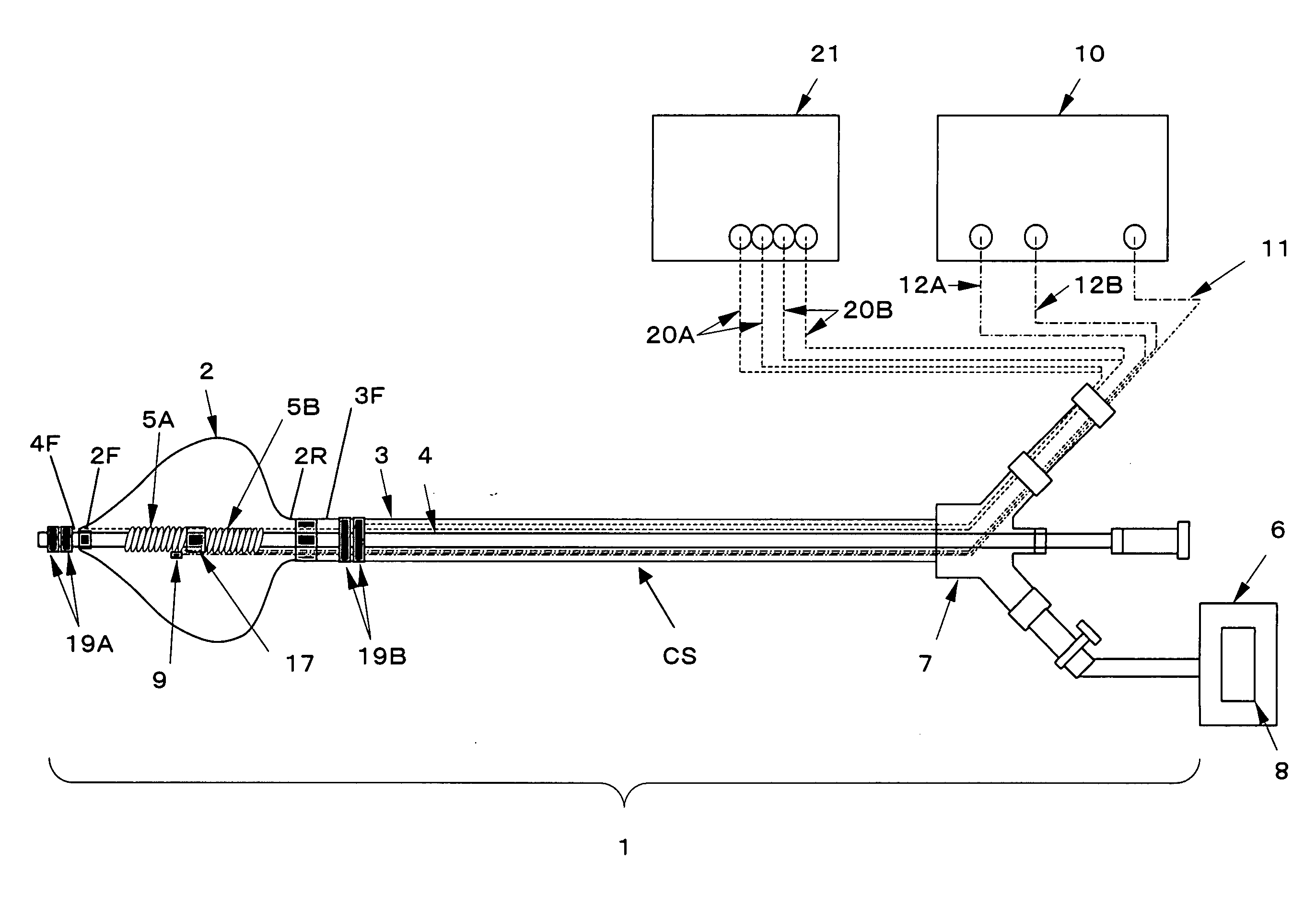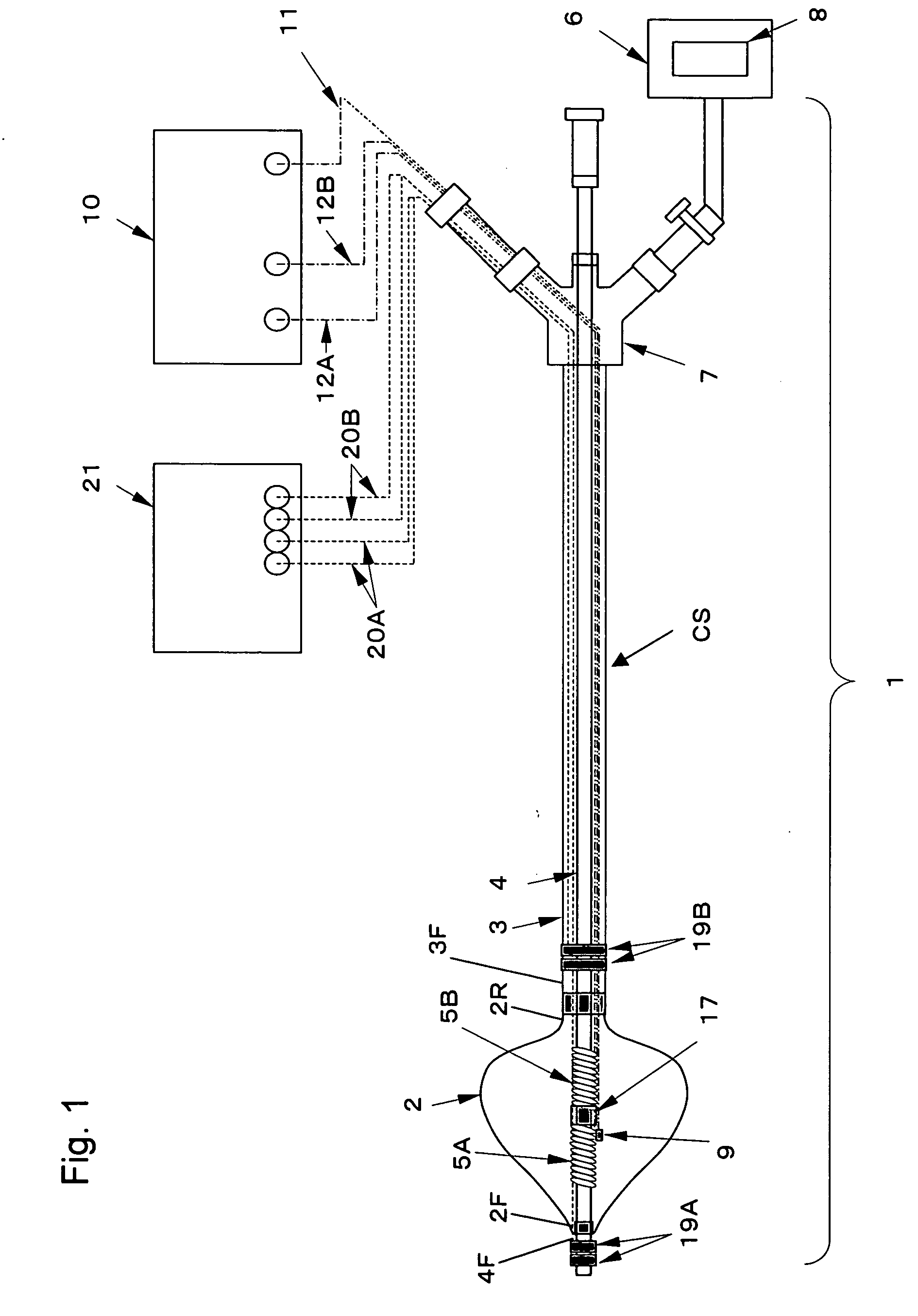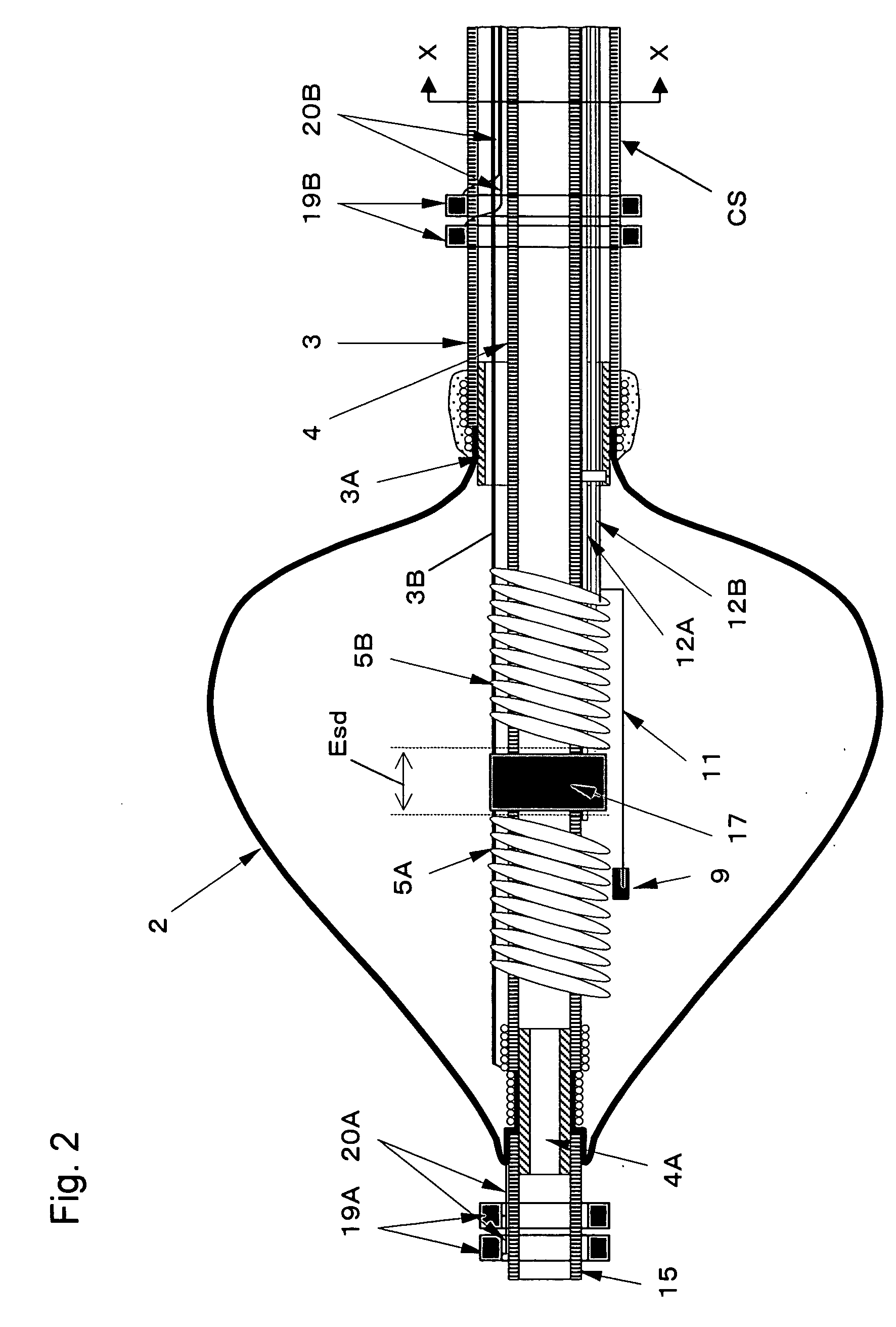Balloon catheter
- Summary
- Abstract
- Description
- Claims
- Application Information
AI Technical Summary
Benefits of technology
Problems solved by technology
Method used
Image
Examples
example 1
[0145] A balloon 2 formed like a tapered cone with a length of 30 mm from the front end to the rear end of the balloon 2, with the largest outer diameter of 30 mm on the rear end side and a film thickness of 160 μm was produced as described below.
[0146] A balloon glass mold having a surface corresponding to a desired balloon form was dipped in 13% polyurethane solution, and the coated mold was heated to evaporate the solvent, to form a urethane polymer film on the surface of the mold as the balloon 2 by a dipping method.
[0147] As the outer cylindrical shaft 3 of the catheter 1, a 30% barium sulfate-containing PVC tube with an outer diameter of 12Fr, an inner diameter of 2.7 mm and an overall length of 800 mm was prepared. As the metallic pipe 3A, a stainless steel pipe with a diameter of 2.8 mm and a length of 7 mm, with its outer surface finished by sandblasting, was prepared. The metallic pipe 3A was partially inserted and fitted into the front end of the outer cylindrical shaft...
example 2
[0163] A catheter identical with the ablation catheter of Example 1 except that a metallic guide wire was inserted through the hollow portion of the inner cylindrical shaft 4, was prepared. This catheter is hereinafter called the ablation catheter of Example 2. The heat generation of the metallic guide wire used in the ablation catheter of Example 2 was examined.
[0164] The ablation catheter of Example 2 was immersed in a water tank filled with 37° C. physiological saline. The high-frequency power supply leads 12A and 12B were connected with the high-frequency power supply apparatus 10. Into the balloon 2, a liquid obtained by diluting a contrast medium (ioxaglic acid injection: trade name Hexabrix 320) to 50% using physiological saline was injected to inflate the balloon 2 to such a state that the largest outer diameter on the rear end side of the balloon 2 became 30 mm.
[0165] As the guide wire, a SUS304 wire having a diameter of 0.025 inch (about 0.6 mm) and a length of 1500 mm w...
example 3
[0170] A catheter identical with the ablation catheter of Example 1 except that the lengths of the high-frequency electrodes 5A and 5B in the axial direction of the catheter 1 were 1 mm respectively, was prepared. The surface areas of SA and SB of the high-frequency electrodes 5A and 5B in this catheter were about 20 mm2 respectively. This catheter is hereinafter called the ablation catheter of Example 3.
[0171] The ablation catheters of Comparative Example 2 and Examples 1 and 3 were respectively immersed in a water tank filled with 37° C. physiological saline, and in each of the catheters, the high-frequency power supply leads 12A and 12B were connected with the high-frequency power supply apparatus 10. In each of the catheters, a liquid obtained by diluting a contrast medium (ioxaglic. acid injection: trade name Hexabrix 320) to 50% using physiological saline was injected into the balloon 2, to inflate the balloon 2 to such a state that the largest outer diameter on the rear end ...
PUM
 Login to View More
Login to View More Abstract
Description
Claims
Application Information
 Login to View More
Login to View More - R&D
- Intellectual Property
- Life Sciences
- Materials
- Tech Scout
- Unparalleled Data Quality
- Higher Quality Content
- 60% Fewer Hallucinations
Browse by: Latest US Patents, China's latest patents, Technical Efficacy Thesaurus, Application Domain, Technology Topic, Popular Technical Reports.
© 2025 PatSnap. All rights reserved.Legal|Privacy policy|Modern Slavery Act Transparency Statement|Sitemap|About US| Contact US: help@patsnap.com



